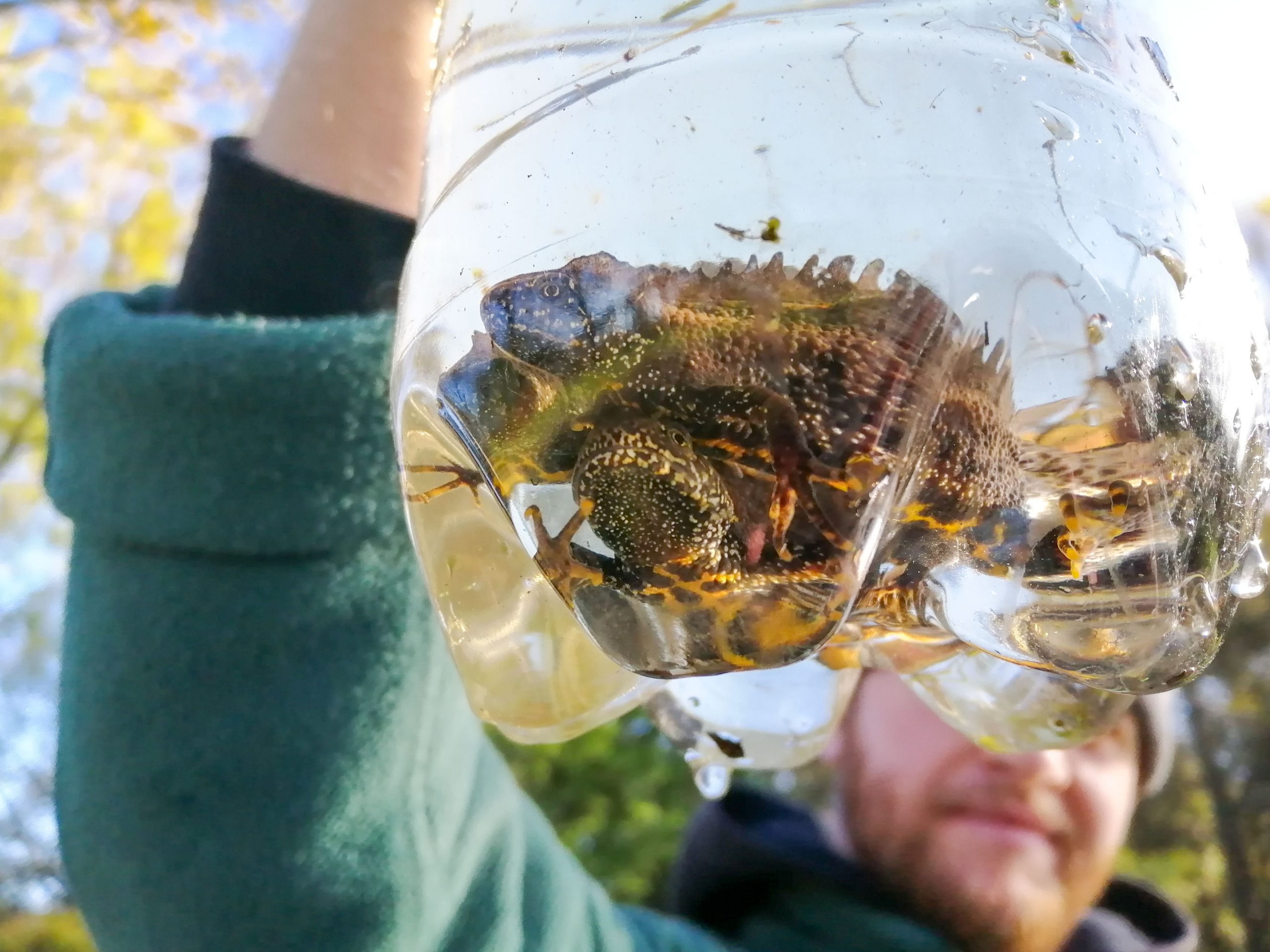In a nutshell…
Great crested newts – often lovingly referred to as ‘warty newts’ – are an endangered species native to Great Britain.
They have full legal protection, which means you could get into serious trouble if your project adversely affects them.
If it looks like newts could be on or around your site, you should get a newt survey done as soon as possible. That way, you know what you’re dealing with, and can figure out how to work around them.
This is our bread and butter. Just click the button above to book your survey with us.
Want to know more about how it all works? Read on.
Why do you need a great crested newt survey?
A great crested newt survey establishes whether this protected species is using your site. Newt surveys are normally triggered when a Preliminary Ecological Appraisal confirms suitable habitats, past historical records or nearby evidence of newts.
You’re more likely to need a great crested newt survey if your site is within 500m of a pond and has suitable habitats like scrub, grassland, hedgerows, brash piles or deadwood piles. Also, if your proposals have the potential to harm individuals, adversely impact suitable habitat or disturb/destroy a GCN breeding or resting place, surveys will be required.
Your project may be eligible for District Level Licensing, which could allow your project to progress faster. Contact us today to discuss your requirements.
The presence of great crested newts is a material consideration for planners. Planning may be rejected if you don’t provide sufficient information. Therefore, surveys should be completed before you submit your planning application. Great crested newt survey work is highly seasonal, so we always recommend getting in touch the minute you think you require surveys. We’ll help you establish the potential constraints to your development, and find a suitable solution as early in the process as possible.
What does a newt survey involve?
Great crested newt surveys have two stages: a site visit followed by Phase 2 surveys.
Due to the level of international protection afforded to great crested newts, Phase 2 surveys can only be undertaken by an appropriately licensed ecologist. We’ll discuss the most pragmatic pathway for further surveys and/or precautionary measures with you, tailored to your specific project requirements.
Here’s the process:
Site visit – These can be done at any time of year
- Habitat Suitability Indicator (HSI) assessment – We’ll assess the ponds on and within 500m of your site using standardised ‘scoring’ of their suitability for supporting great crested newts. The scoring’s based on ten features of the pond and surrounding habitat. If we deem a pond to be of ‘moderate’ suitability or above, further surveys may be needed.
Phase 2 surveys – These are seasonal
- eDNA survey – eDNA is a relatively new method of surveying great crested newts. It involves sending water samples from the pond to a laboratory for DNA analysis to determine whether newts are present. DNA only lasts for two to three weeks in water, so samples can only be taken between mid-April and the end of June. eDNA surveys are a cost-effective way of establishing the presence or likely absence of great crested newts – but if newts are found to be present, further Phase 2 surveys will be required to determine population size and support your European Protected Species Licence application.
- Population Assessment surveys – These take place in early spring, when newts return to their ponds to breed. Surveys involve a minimum of four visits (with two in April or May) and at least three surveying methods. They’ll cover all suitable water bodies on and within 500m of your development site. Standard survey techniques include bottle trapping, hand netting, egg searches, torchlight searches and searches of terrestrial refuges.
- Report: When we’ve completed the surveys, we’ll write up the results in a Phase 2 report suitable for submission alongside your planning application. If there are great crested newts within 500m of your development, we’ll detail the mitigation and compensation measures required to avoid impacts and ensure your project complies with all legislation and policies.
- EPS Licence application and works.
Species status and protection
Great crested newts and their habitats are fully protected by the Conservation of Habitats and Species Regulations (2010) and partially protected under the Wildlife & Countryside Act 1981 (as amended).
This legislation makes it an offence to kill, injure or capture these newts, their young or eggs, or destroy/damage their ponds or places of shelter.
The great crested newt is also a Priority Species in the UK Biodiversity Action Plan (UKBAP) and has been adopted in England under Section 41 of the NERC Act 2006.
For more information on great crested newt surveys in the South and South West, contact us now.
